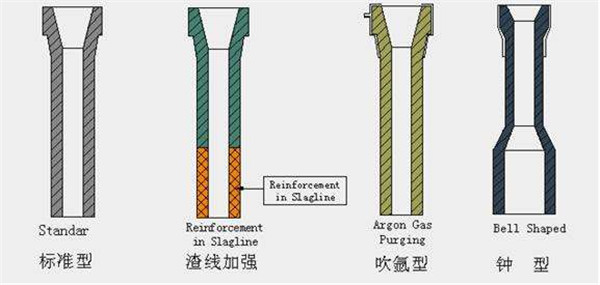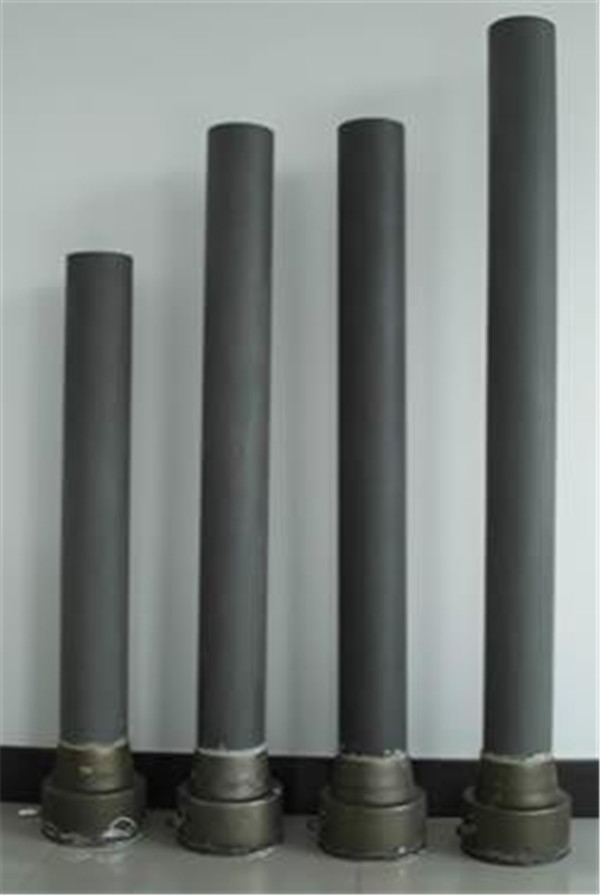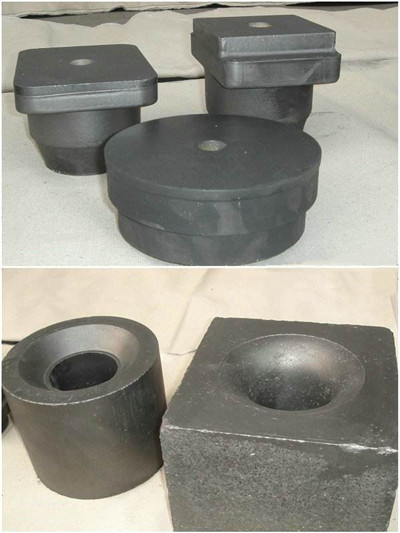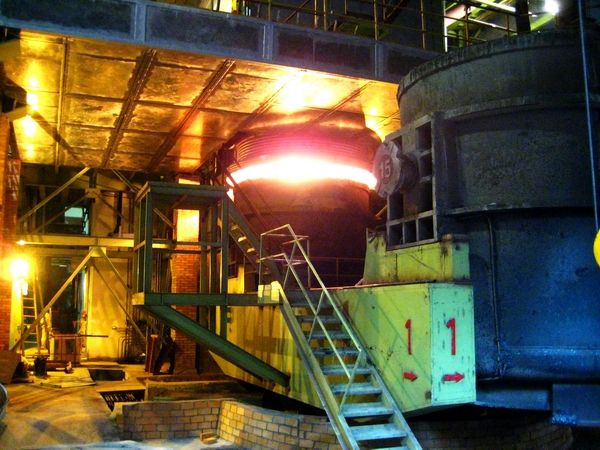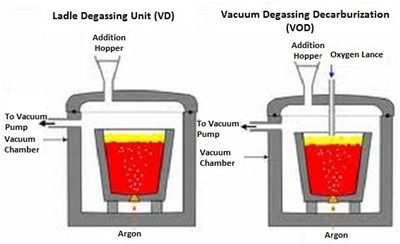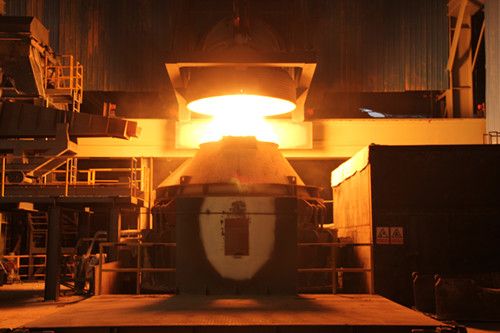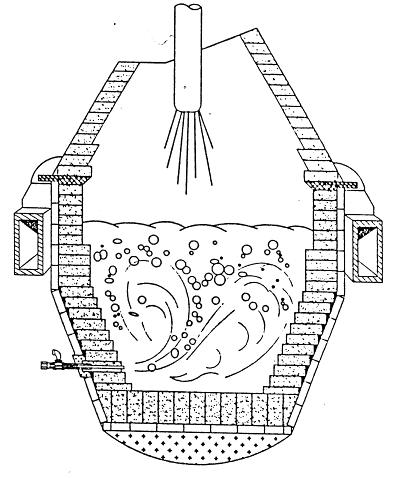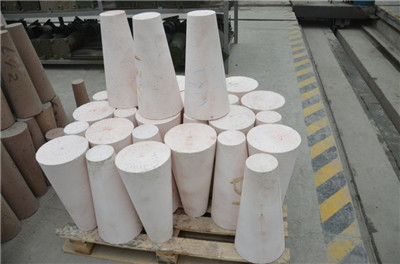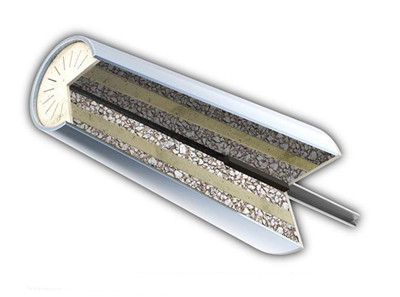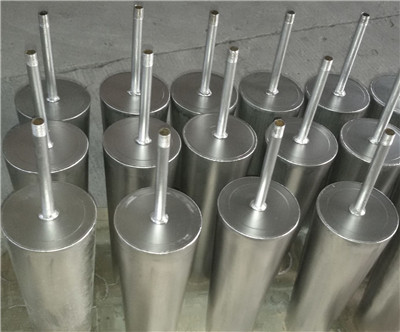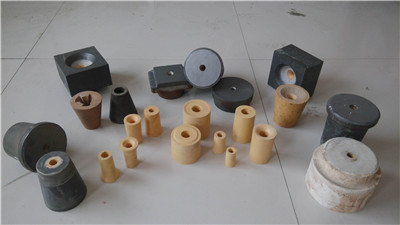RH and DH Refractory
RH and DH Refractory
RH is vacuum argon blowing recycling degassing equipment for steel liquid refinery, and DH is vacuum degassing refinery equipment. By blowing high speed argon in immersion tube and vacuum chamber upper part, steel liquid in ladle will flow into bottom side of vacuum chamber and be degassed, and then flow back to ladle through the other dipping tube. Through vacuum recycling degassing, harmful gases such as nitrogen, hydrogen in steel liquid can be removed. If oxygen blowing is adopted, carbon content can be decreased to a very low extent. RH and DH refinery equipments are mainly used for low carbon steel, low nitrogen steel and low hydrogen steel. Under those working conditions, furnace lining refractory materials should have good scouring resistance, vacuum resistance and thermal shock resistance.
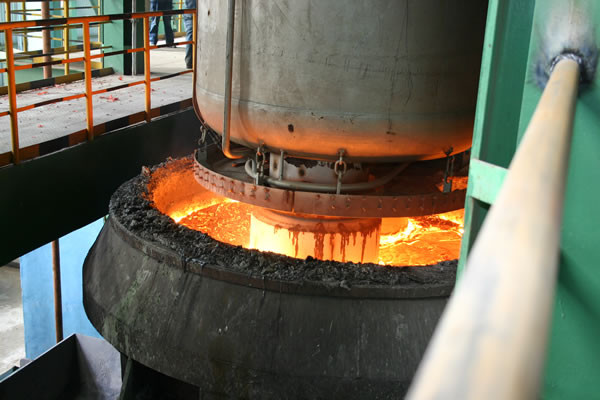
In concern of cleaning steel production, refractory materials should better contain no carbon, nitrogen and hydrogen. Usually, vacuum chamber can use magnesia chrome bricks, inner side of immersion tube can use magnesia chrome bricks, while the outer side can adopt alumina magnesia spinel castable. The service life of magnesia chrome bricks at vacuum chamber upper part can reach to 2000 times or more, but the lower part is only about 500 times. The service life of immersion tube is about 100 times, varies with working condition and maintenance quality.
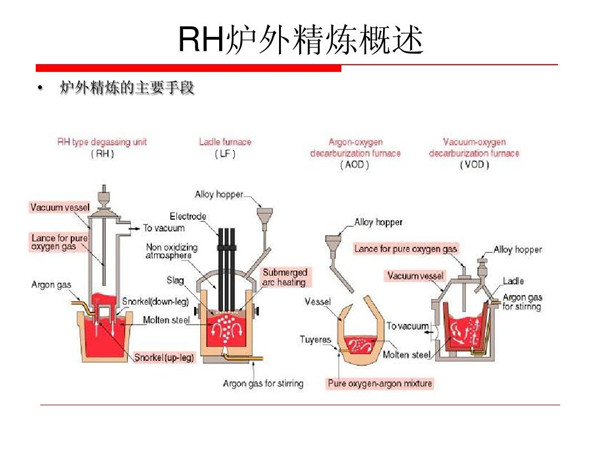
Magnesia alumina spinel bricks can be a good replacement of magnesia chrome bricks, but the corrosion resistance is not as good as magnesia chrome bricks. Another replacement of magnesia chrome bricks is low carbon magnesia carbon bricks, which has good performance price ratio compared with MgO-Cr2O3 bricks. RH immersion tube can be integrally casted by magnesia alumina spinel castable or magnesia zirconia castable. Through patching, the service life of integrally casted immersion tube can reach to or exceed magnesia chrome bricks lining.
RH Refractory Material Physiochemical Index
| Item | Basic mortar | Alumina magnesia castable | Insulating brick | Calcium silicate board | Direct bonded magnesia chrome brick |
| Application | Masonry of magnesia chrome brick | Immersion tube, vacuum chamber upper part | Vent pipe, vacuum chamber | Vacuum chamber | Vacuum chamber |
| MgO % | 92 | >2 | / | / | 80 |
| Al2O3% | / | >90 | 51.2 | / | / |
| Fe2O3 % | / | / | 1.7 | / | / |
| Cr2O3 % | / | / | / | / | 6~13 |
| SiO2 % | / | / | / | / | 1.98 |
| Apparent porosity % | / | / | / | / | 15 |
| Bulk density g/cm3 | / | ≥2.90 | ≤0.9 | 0.23 | 3.06 |
| Compression strength Mpa | / | ≥40(11o℃) | 7.37 | ≥0.5 | 59.2 |
| Rupture strength Mpa | / | ≥8.4(110℃,24h) | / | 0.52 | ≥6.0(1200℃) |
| Reheating linear change rate % | / | ±0.5(1500℃,3h) | -0.43 | 1.5 (1500℃,3h) | / |
| Refractoriness ℃ | >1790 | >1790 | / | Max.1000 | / |
| Item | Magnesia gunning mix | Magnesia chrome gunning mix | Magnesia injection mix | Magnesia carbon brick | Magnesia spinel precast block |
| Application | Vacuum chamber lower part, immersion tube | Immersion tube, vacuum chamber upper part | Immersion tube, vacuum chamber upper part | Vacuum chamber lower part, immersion tube | Vacuum chamber lower part, immersion tube |
| MgO % | ≥85 | ≥70 | ≥70 | ≥85 | 80 |
| Al2O3% | / | 4 | 3 | F.C≤5 | 10 |
| Fe2O3 % | / | ≤5 | ≤5 | / | / |
| Cr2O3 % | / | ≥5 | ≥5 | / | / |
| SiO2 % | ≤6 | ≤4 | ≤5 | / | ≤2 |
| Apparent porosity % | ≤24 | ≤24 | ≤24 | ≤4 | ≤15 |
| Bulk density g/cm3 | ≥2.2 | ≥2.3 | ≥2.4 | ≥3.10 | 3.06 |
| Compression strength Mpa | ≥25 (11o℃) | ≥20(11o℃) | ≥20(1600℃,3h) | ≥30 (11o℃) | ≥40 (11o℃) |
| Item | Magnesia chrome brick | Magnesia chrome brick | Magnesia chrome brick | High alumina castable | Direct bonded magnesia chrome brick |
| Application | RH vacuum chamber upper part | RH lower part, recycling tube and immersion tube | OB gunning machine for RH | Vacuum chamber | Immersion tube |
| MgO % | 80 | 76.9 | 69.9 | / | 65 |
| Al2O3% | / | / | / | 92.8 | / |
| Fe2O3 % | / | / | / | / | / |
| Cr2O3 % | 8.4 | 10.9 | 18.67 | / | 19 |
| SiO2 % | 1.6 | 1.46 | 1.52 | / | ≤2 |
| Apparent porosity % | 16 | 15 | 15 | / | 15 |
| Bulk density g/cm3 | 3.05 | 3.11 | 3.00 | 2.79(1500℃,3h) | ≥3.12 |
| Compression strength Mpa | 60 | 66 | 61 | ≥30(1500℃,3h) | 60 |
| Rupture strength Mpa (1480℃) | 10 | 7.6 | 9.1 | ≥8.4(110℃) | 60 |
| Reheating linear change rate % | / | / | / | -0.27 (1500℃,3h) | -0.27 (1500℃,3h) |
| Refractoriness under load ℃ | >1650 | >1700 | >1700 | / | >1700 |
| Item | RH gunning mix | RH injecting mix | CAS immersion tube castable | KIP spray gun castable |
| Application | Masonry of magnesia chrome brick | Immersion tube, vacuum chamber upper part | Vent pipe, vacuum chamber | Vacuum chamber |
| MgO % | / | / | ≥4 | / |
| Al2O3% | ≥92 | ≥92 | ≥87 | ≥95 |
| Refractoriness ℃ | >1790 | >1790 | / | / |
| Bulk density g/cm3(110℃,24h) | ≥2.90 | ≥2.60 | ≥2.95 | ≥3.00 |
| Compression strength Mpa(1500℃,3h) | ≥50 | / | ≥40 | / |
| Rupture strength Mpa (110℃,24h) | ≥4.0 | ≥4.0 | / | ≥4.0 |
| Linear change rate %(1500℃,3h) | ±1.0 | ±1.0 | / | 0~2.0 |
